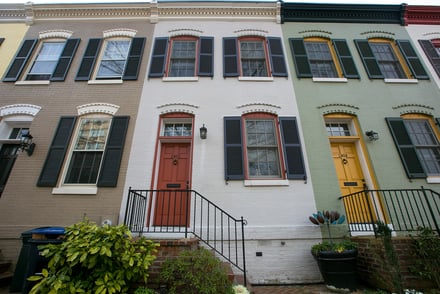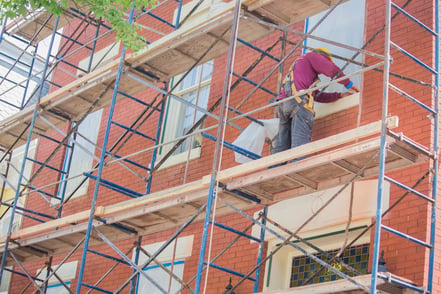Before you hire a contractor to do any work on your masonry, the first thing to do is schedule a site inspection to get an estimate. The estimator needs to see and sometimes touch the problem areas to determine the scope of work involved. Before or during the site visit, the homeowner can describe any concerns and ask questions of the Estimator.
Approaches to Site Evaluation
Typically, the scenario is that the inspector directly visits the property to do the inspection. They will examine, photograph, measure, and make notes about areas of the exterior facade that may need work. They may also check areas inside the home (COVID restrictions, permitting) if the homeowner has cited interior issues.
Suppose the homeowners prefer a contactless assessment due to scheduling conflicts or pandemic-related safety concerns. In that case, the estimator will rely upon information supplied by the homeowner and then make a site visit without the homeowner present. In the end, whatever the means of conveying the collected information, the more accurate and inclusive the data, the better the estimate and proposal.
What Does an Inspection Cover?
These are the main issues covered in an inspection:
- Cracking, spalling, or missing bricks – Sooner or later, most masonry cracks or shows other deterioration signs. Given that brick and mortar buildings are exposed to the elements in all seasons - year after year - restoration and repair are inevitable. Catching damage and deterioration in the early stages can prevent more extensive and expensive repairs later.
- Signs of poor drainage – Poor drainage can present as discoloration, which could be darker staining or salty efflorescence, along with crumbling and loosening. There might be an odor or visible mold.
- Secondary signs of shifting – Along with cracking, other signs that there is a significant shift in a structure include doors and windows that are harder to close or open, crooked frames, compaction of stone or bricks, and uneven flooring or trim.
- Mortar condition – The lime-based mortar in old brick buildings will begin to crumble and get sandy after many years of exposure to the elements. If a key or other sharp object can loosen the mortar, it is time for tuckpointing. If, however, the mortar is rock-solid, it may indicate a previous attempt to tuckpoint (replace old mortar) with modern, hard-setting concrete. A professional inspection will detect whether a previous patch job used the wrong mortar, thereby preventing old bricks from expanding and contracting as needed with changes in moisture and temperature. Serious problems can develop when the mortar mix is too hard for the type of bricks, so it is best to bring in a professional to assess the situation.
- Leaking – Roofs and walls can leak due to cracks or other damage to the chimney. The homeowner may not be aware of this issue if the leaking hasn’t shown outside of an attic or outside wall. The only way to be sure there is no leakage is to get onto the roof and possibly into the attic or upper floors, looking for specific indicators. Sometimes an inner wall will show discoloration or mold, but other times damage may be hidden until the problem gets worse.
When you schedule an inspection with a Renaissance Development professional, we will discuss your concerns, address your questions and explain the next steps. Finally, we’ll draw up a proposal and send it to you, the client, for review and final approval of all details. Call us or go online today to request a site visit.
5/20/21 8:15 AM

